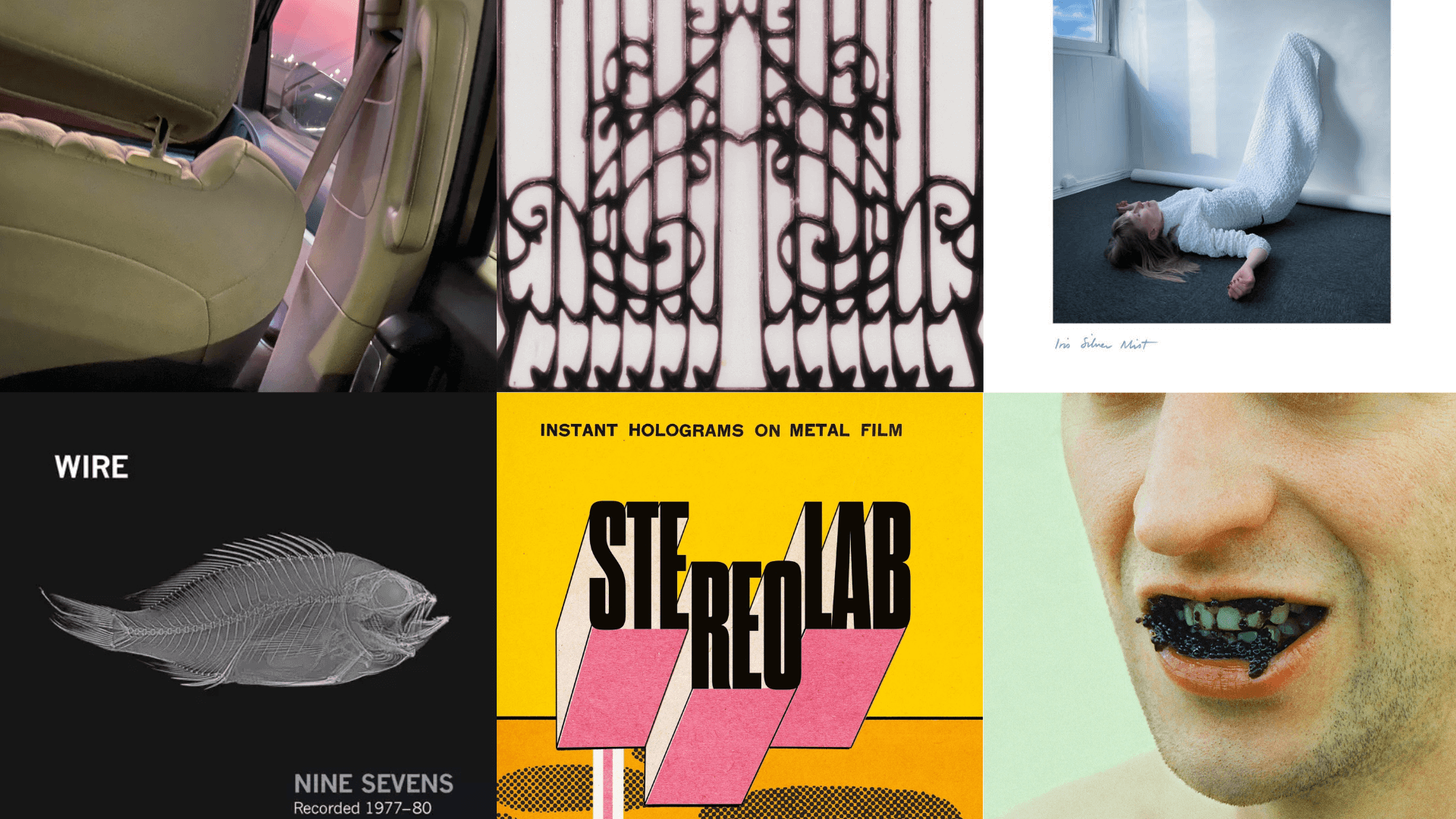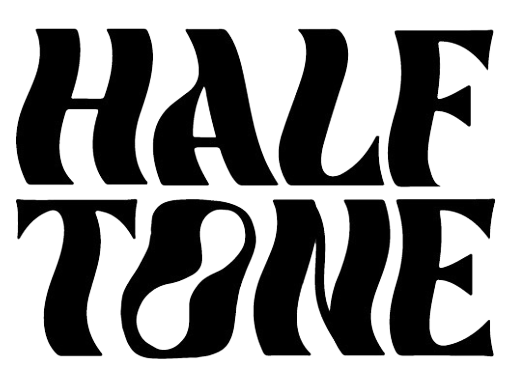

- Guides
A Guide to MF DOOM
Table of Contents
Okay before you start reading, just try to undersand how difficult it actually is to create a complete guide to someone so influentual. Think of this Guide to MF DOOM as more of a base to explore his work from if you are new to his work. Seasoned DOOM fans will not need this.
The above should already point to MF DOOM as an enigmatic rapper and producer, but how pivotal a figure wont be covered in this article. Known for his intricate wordplay, innovative production style, and iconic metal mask DOOM is pretty much an institution at this point.
Born Daniel Dumile in London, England, he burst onto the scene with his work as part of KMD. Yet, throughout his career, he released an array of solo albums, collaborative projects, live recordings, and more.
This comprehensive guide delves into MF Doom’s discography, revealing the diverse musical landscape he crafted through his various personas and some life stories.
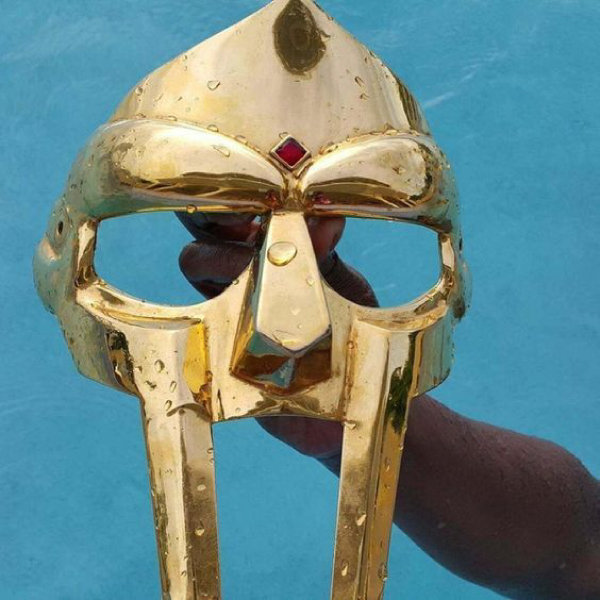
MF DOOM's Early Rapping Career: From KMD to Hip-Hop Infamy
Before MF DOOM donned the iconic metal mask and became a rap enigma, he was Zev Love X, an integral part of the hip-hop group KMD. The journey from forming KMD to MF DOOM’s emergence is a tale of triumph and tragedy, punctuated by artistic evolution and challenges that ultimately shaped his unparalleled career.
The Formation of KMD: A Graffiti Crew's Evolution
In 1988, Zev Love X (MF DOOM), alongside his younger brother DJ Subroc and Rodan, founded KMD as a graffiti crew. The group’s name, initially standing for “Kausing Much Damage,” evolved to “Kause in a Much Damaged Society.” Their origin in Long Beach, New York, was marked by youthful creativity and a commitment to artistic expression.
The Catalyst: "The Gas Face" and Elektra Records
KMD’s breakthrough came through a serendipitous collaboration with MC Serch, a member of the hip-hop group 3rd Bass. Zev Love X’s appearance on the track “The Gas Face” from 3rd Bass’s album “The Cactus Album” caught the attention of A&R executive Dante Ross. This pivotal moment led to KMD’s signing with Elektra Records, marking the beginning of their journey into the hip-hop industry.
Debut Album “Mr. Hood”: Tackling Racism with Humor
KMD’s debut album, “Mr. Hood,” released in 1991, showcased their unique approach to addressing serious social issues. Using a blend of humor and thought-provoking lyrics, the album delved into racism and black empowerment. This record set the stage for Zev Love X’s emergence as a distinctive voice within the hip-hop landscape.
The Shift with "Black Bastards"
As KMD progressed, so did their artistry. Their second album, “Black Bastards,” recorded in 1993, reflected a departure from the light-heartedness of their debut. Addressing more serious themes, the album marked a turning point. However, tragedy struck the group when Subroc was tragically killed while crossing a Long Island expressway in April 1993.
MF DOOM Releases
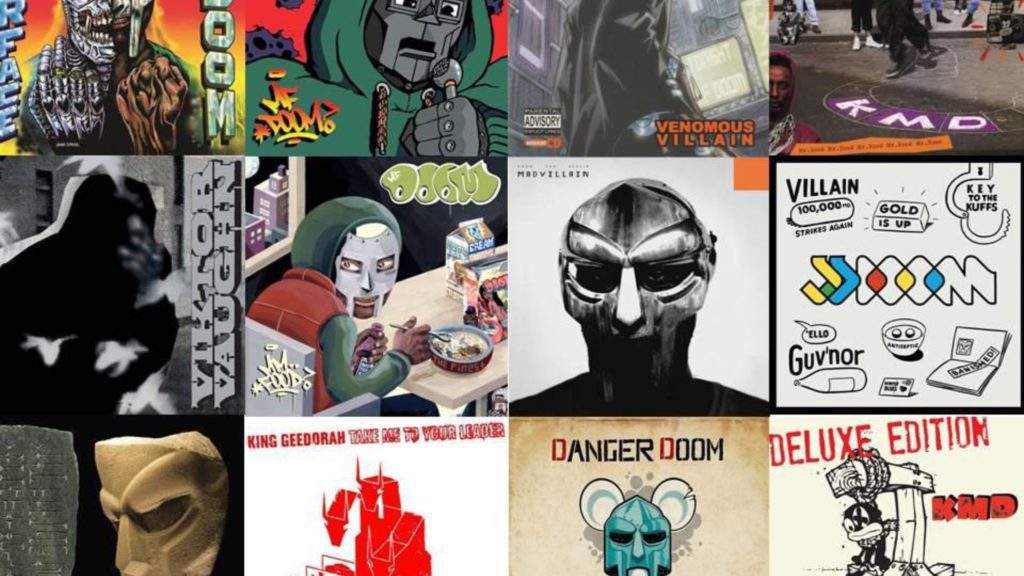
DOOM's Artistry in Solo Albums
Operation: Doomsday (1999): Doom’s debut album, released under his alias “MF Doom,” is a sonic journey into his intricate world. Combining vivid storytelling, unorthodox beats, and his signature mask motif, it set the tone for his career.
Take Me to Your Leader (as King Geedorah) (2003): Under the moniker “King Geedorah,” Doom explored sci-fi themes, presenting a concept album that showcases his production versatility and imaginative storytelling.
Vaudeville Villain (as Viktor Vaughn) (2003): Embracing the persona “Viktor Vaughn,” Doom delivers a darker narrative filled with complex wordplay, demonstrating his ability to craft different personas within his music.
VV:2 (as Viktor Vaughn) (2004): Continuing the Viktor Vaughn saga, this album delves deeper into Doom’s creative universe.
Mm..Food (2004): A culinary-themed masterpiece, “Mm..Food” combines food metaphors, witty lyrics, and soulful samples, showcasing Doom’s skillful wordplay and production expertise. A personal favourite here at Halftone Magazine.
Born Like This (as DOOM) (2009): Operating as “DOOM,” this album carries a matured reflection of his artistry. It explores social commentary, introspection, and the continued evolution of his sound.
Collaborative MF DOOM Albums
- Madvillainy (with Madlib as Madvillain) (2004): The iconic partnership between MF DOOM and Madlib birthed this genre-defying masterpiece. “Madvillainy” is an avant-garde exploration of beats and rhymes that reshaped the landscape of hip-hop.
The Mouse and the Mask (with Danger Mouse as Danger Doom) (2005): DOOM’s collaboration with Danger Mouse resulted in a project that merged hip-hop with cartoon culture, creating a unique and captivating listening experience.
Key to the Kuffs (with Jneiro Jarel as JJ Doom) (2012): “JJ Doom” offers an experimental voyage, showcasing DOOM’s willingness to experiment with sound while maintaining his lyrical prowess.
Live Albums, Compilations, and Instrumentals: Diverse Soundscapes
Live from Planet X (2005): Live album captures Doom’s magnetic stage presence and his ability to captivate audiences with his enigmatic performances.
Special Herbs: The Box Set Vol. 0–9 (2006): A collection of instrumental albums, “Special Herbs” showcases Doom’s innovative production style, unveiling his mastery of beats and samples.
EPs, Demos, and Singles: A Catalog of Diversity
From collaborative extended plays to promotional singles, MF DOOM’s singles, EPs, and demos reflect his prolific output and constant innovation.
Operation Doomsday: The beginning
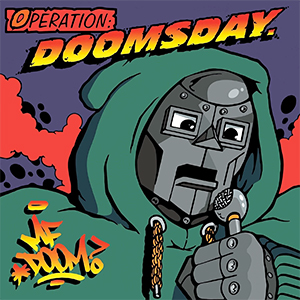
MF DOOM, known for his disapproval of commercialized rap. DOOM was noted for his use of various personas and alter egos, including King Geedorah, Viktor Vaughn, Metal Fingers, and collaborations forming Madvillain, Danger Doom, DOOMSTARKS, JJ Doom, and NehruvianDoom. Bit it all kind of started with Operation Doomsday.
Release Date and Success
Released on Oct. 19, 1999, “Operation: Doomsday” is MF DOOM’s first solo studio album, celebrated for its intricate lyrics and unique flow. “Doomsday”, the album’s significant track, has over 110 million streams on Spotify as of Oct. 2022. “Rhymes Like Dimes” critiques the capitalist lifestyle and the commercialization of rap music.
The album, consisting of 19 tracks, integrated previously released singles with new material, establishing DOOM’s presence in the underground rap scene. The album’s narrative was tied together with clips from the 1967 “Fantastic Four” cartoon series, resonating with listeners and solidifying DOOM’s legendary solo career.
Bobbito Garcia featured DOOM’s new tracks on the Stretch & Bobbito Show, which led to the successful release of vinyl singles and helped build a following. DOOM’s distinct approach included performing masked, initially using stocking caps and makeshift masks before adopting a mask designed by his friend KEO AKA LORD SCOTCH 79. This mask, initially a promotional item for the film “Gladiator,” became synonymous with DOOM’s persona.
Skits on MF DOOM’s Operations DOOMSDAY
The album includes skits that enhance its narrative, such as “The Time We Faced Doom (skit)” and “Doom, Are You Awake? (skit)”, the latter featuring dialogue inspired by the comic book character Doctor Doom. Tracks like “Tick, Tick…” and “Hey!” are notable for their creative samples and lyrics. “Gas Drawls” samples Steely Dan’s 1977 song “Black Cow”.
The track “?” is a personal reflection on DOOM’s brother, DJ Subroc, who passed away in 1993. The album concludes with “Hero vs. Villain (Epilogue)”, prompting listeners to ponder DOOM’s role as either a hero or a villain.
Legacy of Operation Doomsday
DOOM’s work, especially “Operation: Doomsday”, has had a lasting impact on the rap genre, renowned for its lyrical complexity and commentary on the music industry and societal issues.
Take Me To Your Leader
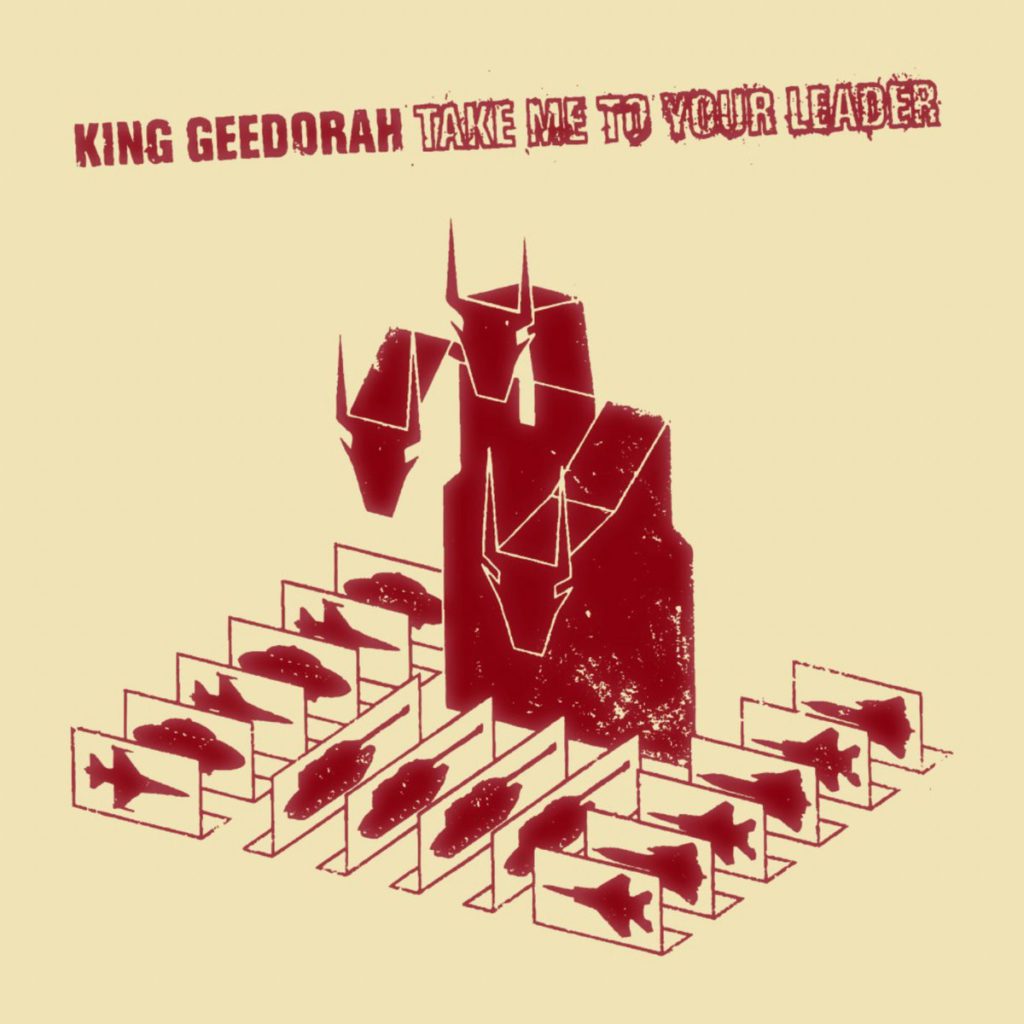
“Take Me to Your Leader” by King Geedorah, released on June 17, 2003, under Big Dada, dives deep into MF DOOM’s experimental side. Monsta Island Czars, a group named after Godzilla characters, featured emcees like Megalon, Rodan, and notably MF Grimm as Jet Jaguar and MF DOOM as King Geedorah.
Despite MF Grimm founding the group, he missed their only album, “Escape From Monsta Island!”, due to incarceration. DOOM had a minor role in this project, focusing instead on his solo work.
Later in 2003, he spotlighted the King Geedorah persona in “Take Me To Your Leader,” marking a standout moment in his career for its experimental nature.
King Geedorah, inspired by the Godzilla villain, shapes the album with themes of destruction and hip-hop beats. While DOOM, as King Geedorah, does rap, he shares the spotlight with his Monsta Island Czars, enriching the album’s fictional world.
Some tracks feature different rappers, while interludes showcase DOOM’s skill in weaving narratives through sampled dialogues, a technique echoing DJ Subroc’s work with KMD and DOOM’s own on “Operation: Doomsday.”
King Geedorah, ruling his domain, crafts and delivers this album with a distinct, cinematic flair, detached from reality.
MM..FOOD
MF DOOM, revered for reinvigorating his career in the late nineties with standout singles and the celebrated album “Operation: Doomsday,” continued to redefine the boundaries of hip hop through the early 2000s. His prolific output during this period included collaborations and solo projects that further cemented his legacy.
A key moment in this prolific era was the release of “MM..FOOD” in 2004, a direct sequel to “Operation: Doomsday”. A personal favourite here at Halftone Magazine. This album stands out not only for its continuity with DOOM’s earlier work but also for its rich, sample-driven soundscapes. DOOM’s skilled blend of intricate vocal samples and eclectic beats creates a narrative that is both compelling and distinctly aligned with his supervillain persona.
Production on “MM..FOOD” was predominantly handled by DOOM himself, with notable contributions from other artists such as Madlib, Count Bass D, and Mr. Fantastik, adding layers to the album’s eclectic and immersive sound. The collaborations within the album enhance the diversity of sound throughout while maintaining a cohesive feel, emblematic of DOOM’s Operation Doomsday.
The album remains a critical piece of DOOM’s discography, offering a complex blend of humor, introspection, and character that continues to attract both longstanding fans and new listeners. The vinyl release of “MM..FOOD” features a custom green and pink double vinyl, housed in a detailed 12” tip-on gatefold jacket, complete with dust sleeves and a digital download card, appealing not only to audiophiles but also to collectors.
Track highlights include “Beef Rapp,” “Hoe Cakes,” and the enigmatic “One Beer,” each showcasing DOOM’s versatile storytelling and innovative production techniques. “MM..FOOD” is more than an album; it’s an auditory feast that confirms MF DOOM’s status as a master storyteller and a visionary producer in the world of hip hop.
King Geedorah, inspired by the Godzilla villain, shapes the album with themes of destruction and hip-hop beats. While DOOM, as King Geedorah, does rap, he shares the spotlight with his Monsta Island Czars, enriching the album’s fictional world. Some tracks feature different rappers, while interludes showcase DOOM’s skill in weaving narratives through sampled dialogues, a technique echoing DJ Subroc’s work with KMD and DOOM’s own on “Operation: Doomsday.” King Geedorah, ruling his domain, crafts and delivers this album with a distinct, cinematic flair, detached from reality.
For more on the album, visit MF DOOM’s official store.
Madvillainy (2004)
MF DOOM Samples
MF DOOM’s sampling skill really stands out in his music. He mixes a wide range of sources, not just music but also dialogues from cartoons and movies. This unique blend becomes a key part of his sound. DOOM uses vintage and offbeat samples in a way that sets him apart. While artists like Westside Gunn make great hip-hop tracks from samples in “Why I do ’em like that” DOOM’s style remains unique for his personal twist on samples.
In “Licorice” from the “Special Herbs” album, DOOM takes a brief clip from the 1975 song “All I Ask” by the Blackbyrds and turns it into something compelling. He brings short samples to life, making them into engaging sounds.Amazing music from unexpected materials.
“Mm…Food” showcases DOOM’s sampling approach, featuring dialogues and tunes from old Fantastic Four cartoons. This ties in with his Dr. Doom persona. The album kicks off with “Beef Rapp,” where dialogue samples set the theme. Food references weave through the album, mixing with dialogue samples and beats to create a rich sound experience.
When the beats drop, DOOM’s smooth lyrical flow shines, often alongside complex samples like the score from the 1981 Spiderman episode “Canon of Doom”.
MF DOOM Merch
If you are going to buy DOOM merch, then only buy from gasdrawls. this is the only official place to buy anything DOOM related while also supporting the DOOM estate directly.
That being said, it’s worth looking at the types of MF DOOM merch there has been over the years.
The Legacy of MF Doom
MF DOOM’s legacy is deeply ingrained in the fabric of hip-hop culture.
His intricate lyricism, innovative production, and larger-than-life persona continue to inspire artists across generations. He continues to gain fans and respect from a wide range of musicians regardless of genre.
From his solo ventures to groundbreaking collaborations, DOOM’s discography exemplifies his dedication to pushing the boundaries of music and storytelling.
Over 25 years worth of music. 8 million monthly listeners on Spotify.
As you navigate DOOM’s diverse catalog, you’ll discover a complex artist who continually defies conventions. Blurring the lines between genres and flipping 70s samples.
From his iconic metal mask to his enigmatic stage presence, MF Doom remains an unforgettable force in hip-hop history. Music that brings with it it’s own world of villains and heroes, albums that bring laughs as much as they speak truths. Playful production, self-aware writing and everything that is missing from the rap world today.
MF DOOM Resources, Insights and Information.
A complete guide to MF DOOM would be too difficult, so we don’t pretend that the above writing is nearly half done. We will however keep updating this document where and when possible.
The MF DOOM Community have already contributed a lot to his legacy and cult of personality, and we don’t pretend to be anywhere near as knowledgeable. With that being said, below we have provided a useful list to MF DOOM related content, resources and insights.
- Roland do a great listening guide to MF DOOM.
- Be sure to check out Red Bull’s Interview with MF DOOM.
Related Posts

